Antiquities: Palm OS, efficient code and ugly photos
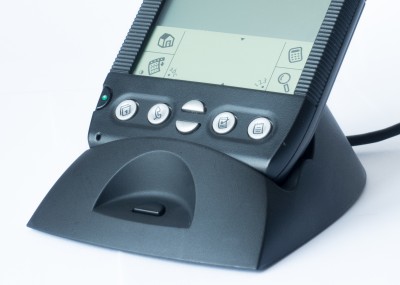 It is shorter there when it turns on for the first time (or the batteries are exhausted), you need to calibrate the screen and set the time with the date. This is the first and last stupid in Palm OS of the third version. Then, you will not believe, everything flies. You click on the application, and it opens yesterday . Breathe, and you have notes, contacts, solitaire, books, dictionaries. Everything is instant, even if the software is crooked, then crashes like a rocket on the launch pad - without these painful seconds of waiting.
It is shorter there when it turns on for the first time (or the batteries are exhausted), you need to calibrate the screen and set the time with the date. This is the first and last stupid in Palm OS of the third version. Then, you will not believe, everything flies. You click on the application, and it opens yesterday . Breathe, and you have notes, contacts, solitaire, books, dictionaries. Everything is instant, even if the software is crooked, then crashes like a rocket on the launch pad - without these painful seconds of waiting.Comparable experience in 2018 can be obtained if you have just bought the latest, latest iPhone or flagship Android. Here the first three hours will be the same, then everything: stupid, lags, you know. Today I will talk about Handspring Visor handheld personal computer. This is a representative of the side branch of the evolution of portable computers. Small, cheap, fast and crisp. He did not survive, and we are all to blame. And I'm also to blame, because long ago, I had traded the minimalism of the early Palm OS for the expensive dullness of the universal device, first on Windows Mobile, then on iOS / Android.
The history of the Palm platform is interesting not with technical findings and breakthroughs (although they certainly were there), but with some sort of permanent struggle against the corporate bureaucracy, starting with the first disastrous Zoomer device developed by Palm founder Jeff Hawkings. Then there were mergers and acquisitions, US Robotics and 3com, then the “independence” type, and such that the founders leave their own company and create a competitor. Yes, even the founder of Palm differs markedly from other steves jobs and gates bills in that pocket mobile devices have never been his main goal in life.

')
In general, he was always interested in how the brain works and how to reproduce this functionality in silicon. Palm, Handspring and other Treo were for him a technical moment - to earn the loot and reputation for the realization of the business of their dreams. What he is doing right now, and seems to be successfully, successfully, with his ideas, getting into a wave of attention to machine learning algorithms. How did all this affect Palm, handheld devices and the IT industry in general? It is difficult to say, but I have one suggestion, which I will share at the end of the post. In the meantime, here’s a story about Handspring Visor, a Palm-based PDA, which is better than a Palm.
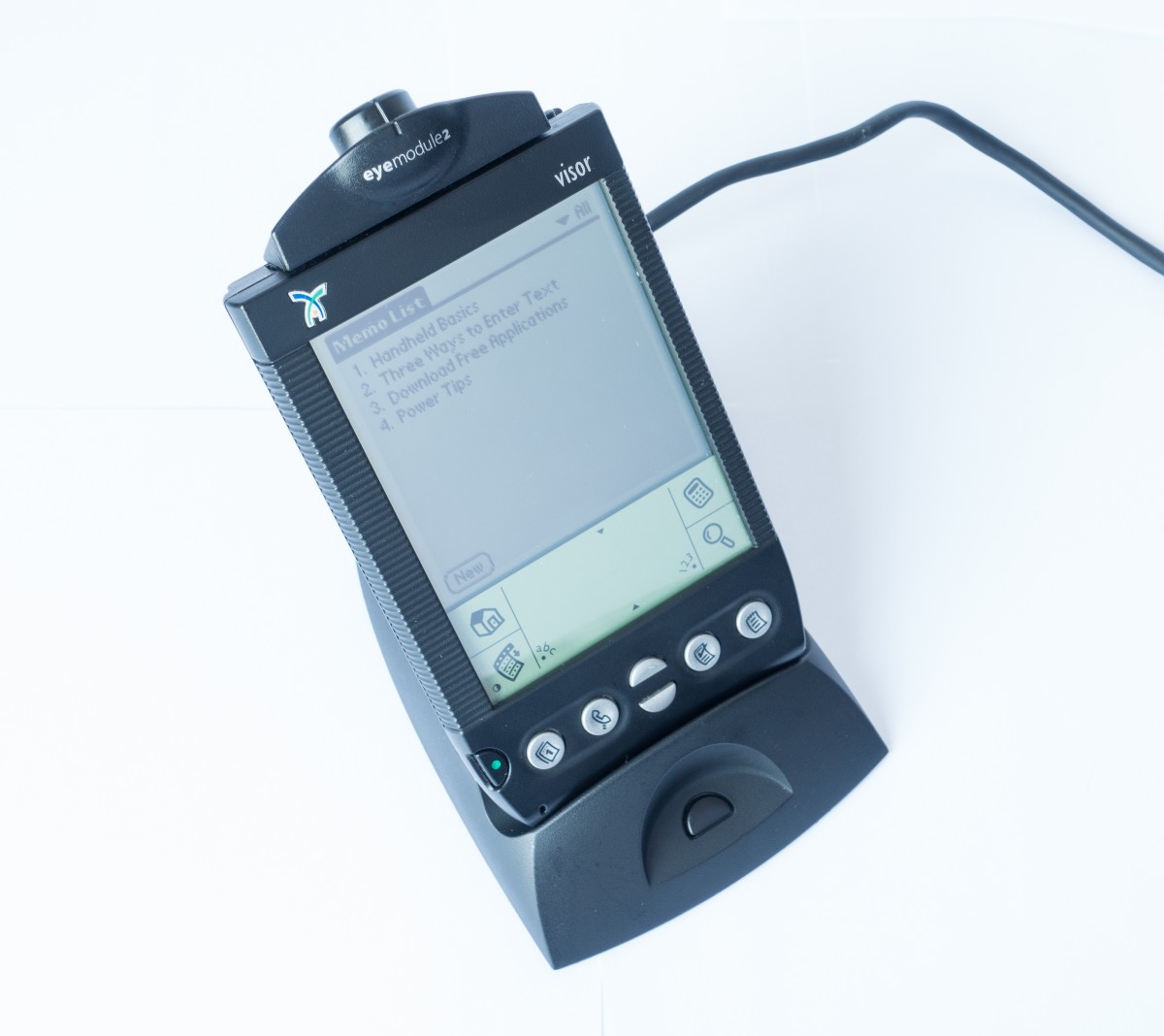
Collector Notes
If you want to have on hand, for nostalgic purposes or for some reason, the only Palm OS-based PDA, then Handspring Visor is not the most obvious choice. In terms of functionality, it is logical to take the most modern devices - Palm Tungsten T5 or something. Can we afford a color screen in 2018? The most stylish palm trees are of course the Sony CLIE. Rarities are the legendary thin Palm V. Even Handspring, if you choose from the shortly living Visor series, has the Visor Edge, is an incredibly thin device with a very nice design.

So I started with the Edge series, because once upon a time, in the early 2000s, my colleague had one, and I didn’t, and I was jealous. I bought a simple Visor (more precisely, a Deluxe model) for a simple reason: I found a new one and for a penny, complete with a paging communication module, which hasn't been working for a hundred years. As usual, the “savings” on a successful purchase were completely lost by the purchase of various accessories - if you can expand the functionality, then you need to expand! Over time, the fashionable and thin Visor Edge went to the warehouse: the two copies I had had half-dead built-in batteries, and the thin design was not so convenient in everyday use.
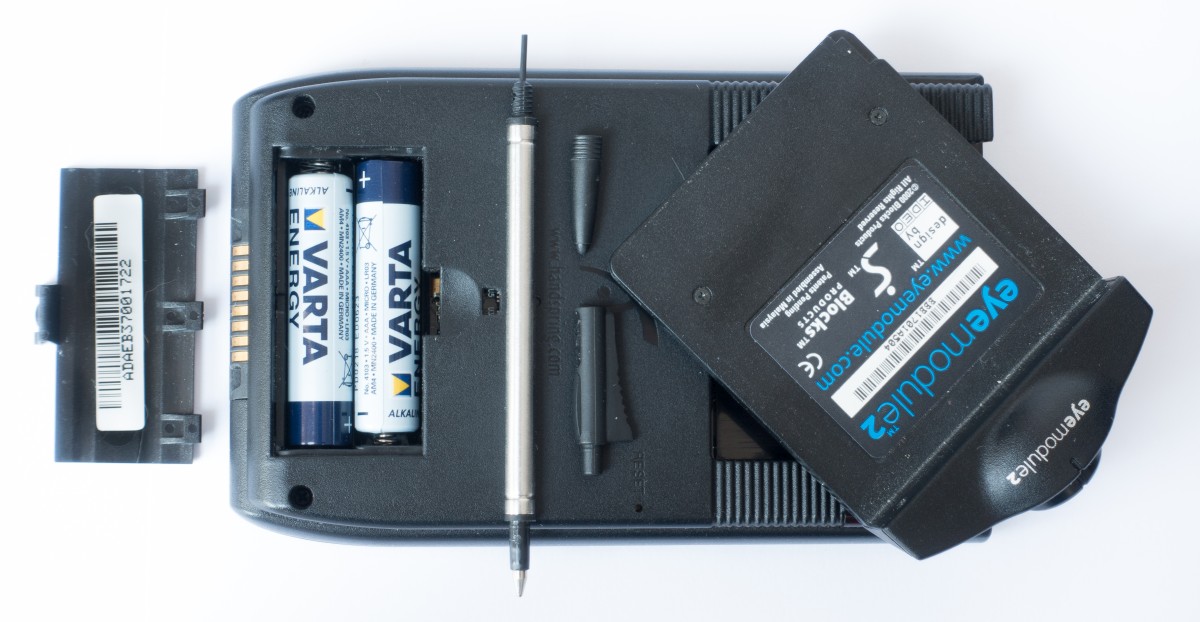
Simple Handspring Visor Deluxe turned out to be comfortable, with an unkillable plastic case. It works on AAA batteries, which you can buy a bucket and solve the issue of autonomy forever. SpringBoard plug-ins do not bulge out as much as the Edge looks organic enough, especially when the color of the PDA matches the color of the module. Handspring Visor - this is not for the collection, this is if you suddenly still use Palm OS daily. Such a PDA, in contrast to the more fashionable, modern, color, universal, less likely to let you down.
Palm OS in 2018
Everything is very bad . Four years ago, when I helped prepare this post, the Palm site was still running, supported by HP. Since then, the little that remains of Palm has been sold to Chinese company TCL (brand) and Korean LG (webOS platform), the site has been turned off. In short, finding a software for working with Palm PDAs is not that difficult. But in the process you will not be given any support at all from the manufacturer. To synchronize with a computer and install programs, you need Palm Desktop - the software is already old, working poorly under 64-bit OS, but it works perfectly (in version 4.x) under Windows 98.

With expansion modules, the situation is even worse. On a business trip to the US, I bought a new, packaged module that turns a PDA into an MP3 player. I could not take the box with me - there was no space in the suitcase - and together with the box I accidentally threw out a disc with software. As a result, I don’t have a way to upload new music to a memory card with a proprietary, unique file system - perhaps only through a long-forgotten software for Linux. Download "from the manufacturer's website" also does not work: there is no website, and when it worked, there was no software there. In 2000, companies did not have the habit of putting drivers and software on the site. At best, there was an online store and technical support phone.

In the light of this rapidly degrading information space, I would like to thank those responsible for the resources that are still working (at the time of publication). These are, for example, the catalog of programs on the website of the company Maktsentr hpc.ru , the site of the beautiful, and the free Cyrhack cracker , and the site of the program for reading books iSilo . By the way, if you have been using iSilo for many years for free , you have a chance to buy the licensed version for only $ 10!
Springboard Expansion Modules
Before the advent of Handspring devices, Palm handhelds remained a thing in themselves: that's what you bought at the store, and use it. 8 megabytes of memory (and cheaper versions had two megabytes) - this was not enough at the beginning of the 21st century. Windows CE competitors with extensibility had no problems. If I'm not mistaken, the first PDA on this platform with expandable memory was the Palm m500, the 2001 model.
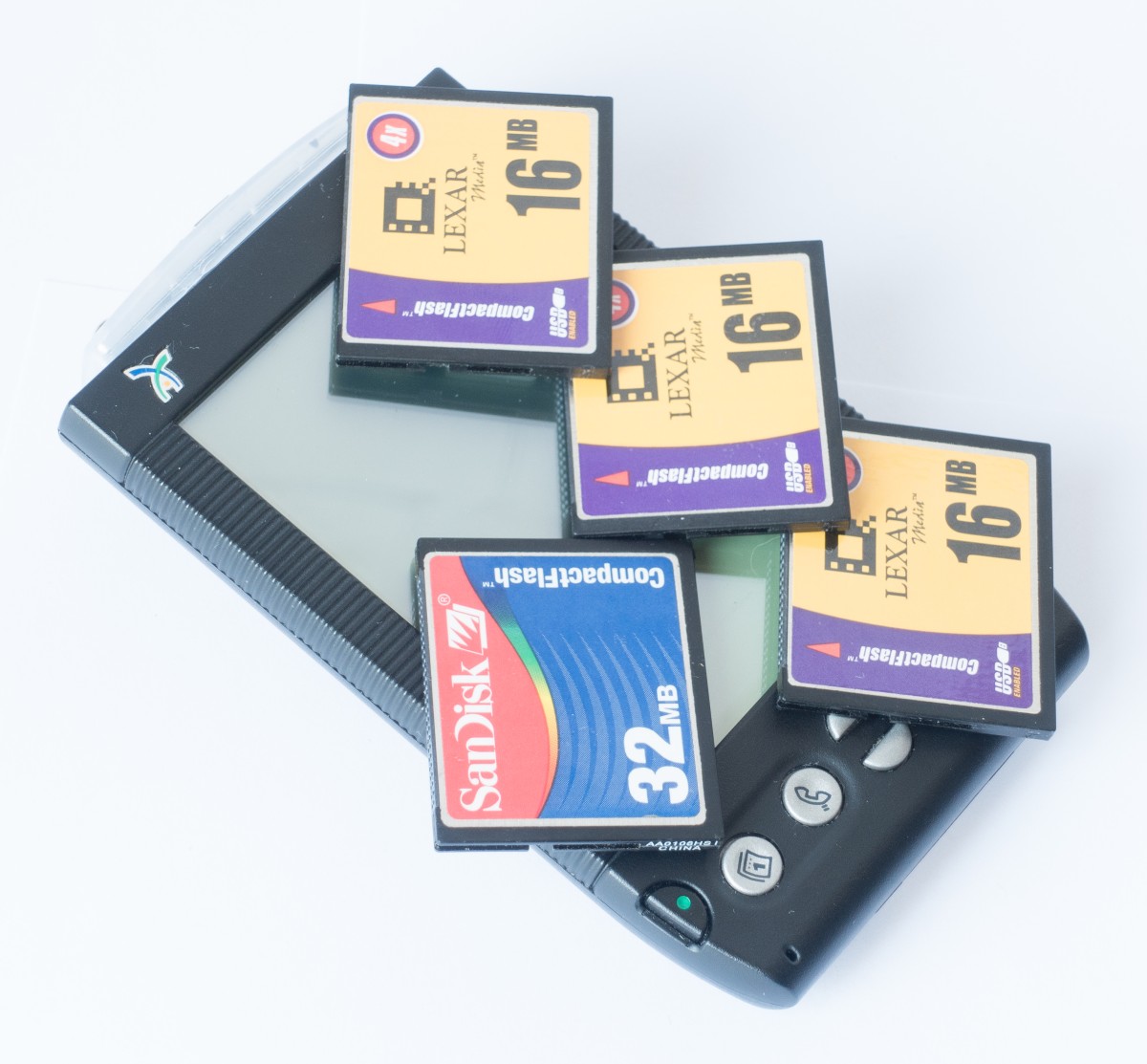
The Handspring expansion slot was not only and not so much about memory. Although now the first thing you should buy for your new-old Visor is the Springboard adapter for CompactFlash cards. It will allow you to make a backup directly on the PDA, in order not to regret the lost data, when you inevitably forget about your device for a month or six months, and its batteries will sit down. You may have problems finding maps of a very small size, but the module vendor supplied me with an extensive assortment of 16 megabyte maps (not gigabytes, but megabytes!).
So, the software necessary for the operation of the Springboard module was stored on the module itself. You insert a module, and it immediately launches the software necessary for its operation! No need to download, install from the driver disk. Appstore and the Internet, of course, are also not needed. Only if you need something to work with the module on a large computer. Or if you have a navigation module to which you need to install bulk maps.
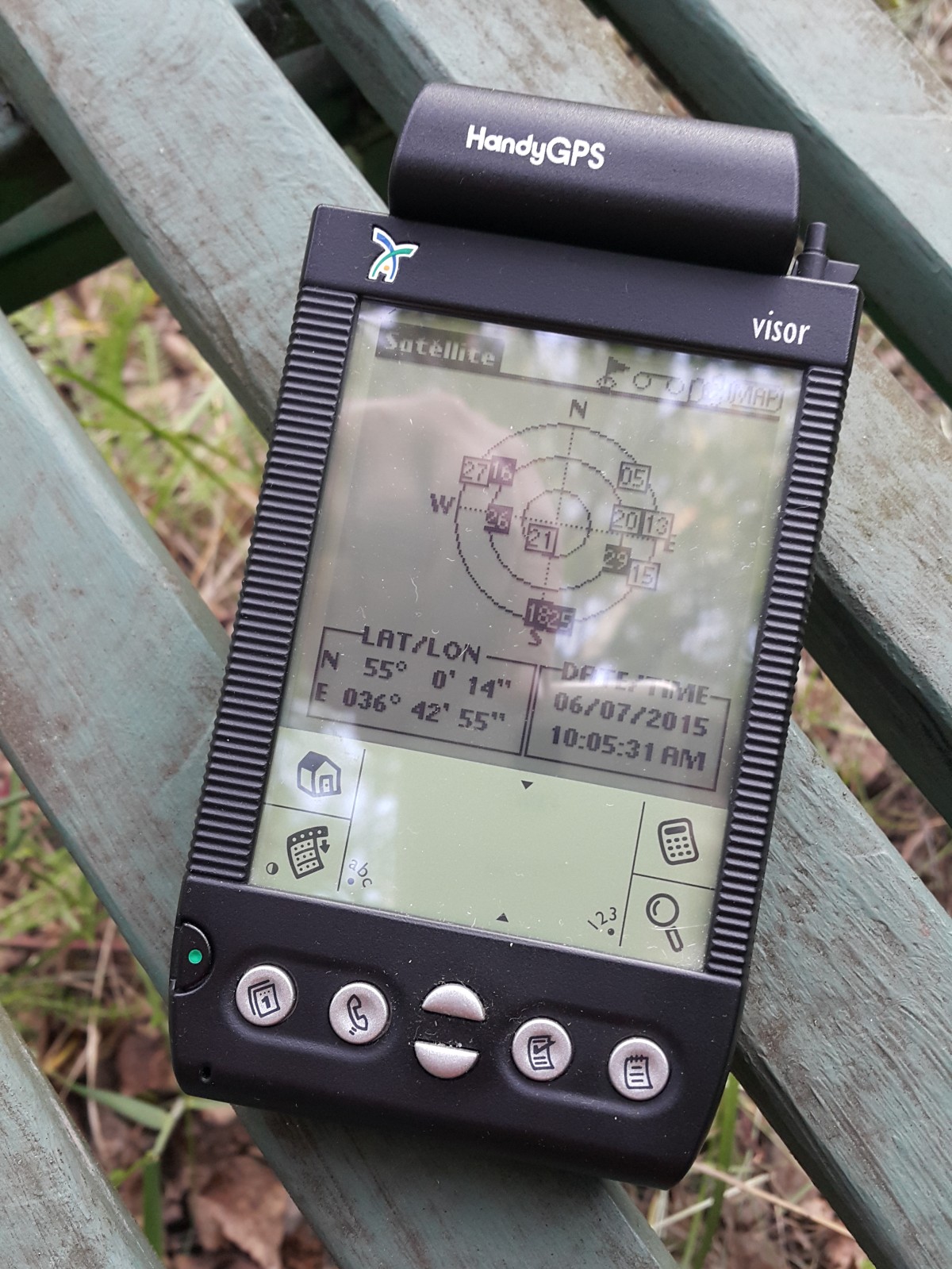
Honestly, I tried two different GPS modules at once, and this is some kind of horror. I will not even talk about a cold start for 15 minutes. Single bit raster maps with mediocre routing abilities are too far from my ideas about normal navigation. GPS on a Palm with a monochrome screen is proof of concept, a demonstration of technology. I feel sorry for those who really used these technologies 18 years ago, I now understand their pain.
But the camera is interesting. First of all, here I exploded on a mine of missing software. I bought the eyemodule module cheaply. As promised, you can take pictures immediately after you plug the module into the Springboard slot. But to transfer photos to your PC - you need a special soft extension (conduit) for Palm Desktop. And you will not find it anywhere. I tried, I have at least failed. I had to order a more advanced version of eyemodule2, new in the package, complete with a proprietary CD, which I immediately poured into various clouds.
Mobile photography in 2000 looked like this:

The maximum resolution is 640x480; there are about 50 of these photos in the 8-megabyte Visor Deluxe. And no, you can't post them directly to Instagram. Instagram does not exist yet.


The photos above were taken using Handspring Visor Deluxe + eyemodule2 (2000), and the Samsung Galaxy S9 Plus (2018). To preserve objectivity, I did not sign where the photo was. Can you determine? It seems that during these 18 years there has been a significant progress in mobile photography, in the means of content consumption. As part of the programs that bring benefits (cost management, calendar, contacts, notes) - it has definitely become more convenient. Has it become more productive? Not sure.

On the screen, when you try to build a frame, so to speak, you see this. Not the best method even in comparison with digital cameras of that time. But there is something in it. A couple of years ago, I took a Handspring Visor with a photo module on vacation. And I realized that he has two advantages. Firstly, the quality of photos is always pleasantly surprising: by definition, you expect the worst. Secondly, the composition of the final photos is also surprising; you take pictures almost blindly.

And at night, in general, beauty turns out!
The device is not for the masses
Palm, reunited with Handspring, like Apple with Steve Jobs, buried Palm OS 4 years before she died in the depths of HP. The fate of this company is somewhat similar to the fate of Nokia: in either case, there was a rejection of its own software platform in favor of the Microsoft platform (Windows Mobile and Windows Phone, respectively). In both cases, such a refusal did not lead to anything good, although it was most likely inevitable. It's not about Microsoft: that Symbian, that Palm OS clearly lost to the new iOS and Android platforms. By the way, what was Palm founder Jeff Hawkings doing in 2007 when the first Apple iPhone was introduced? He demonstrated a prototype netbook.

No seriously. I think that even before the historical presentation of Steve Jobs, it was clear that the main device for most consumers would be a smartphone. Or a tablet. Well, not exactly a laptop. Moreover, if this laptop is not able to work by itself, only in conjunction with the smartphone Palm Treo. What for? But why? WTF? My version: Hawkins recalled his long-time passion at the junction of semiconductors and biology. And so beautifully left: here's a cool piece of iron. I do not like? Well, okay, I'll go then.
Left without a founder, Palm made an attempt to compete with Apple and Google, refusing both PalmOS and Windows Mobile (the latter at that time was buried by MS itself), developed its own webOS platform. But it seems either time was lost, or universal mobile devices loaded with features with a slide were not what this company could do.

So, my guess is that due to the complexity of packing “big” technologies into a small case at a reasonable price, Palm has for some time managed to even be the leader of the PDA market due to its unique niche qualities. Limited iron but long battery life. But fast, highly optimized software. But a user-friendly interface that skillfully bypasses the obvious iron deficiencies. Clearance for a small number of well-working applications: organizer, phone book and the like.
Could such a device be in demand now? Why not, we can afford not to have one mobile device, but two (three, eighteen) - they are now inexpensive. The closest modern analogue of the CCP is the e-book: a niche product that does not bring billions, but is quite successful. 10 years ago - well, hardly. Today, Palm would have a chance to live as a niche manufacturer of devices sharpened for two or three tasks that perform these three tasks perfectly. She would have a loyal audience of a couple of million people willing to pay for the convenience unattainable on "ordinary" smartphones. It could exist due to the availability of high-quality OEMs in China and, in principle, cheap iron.
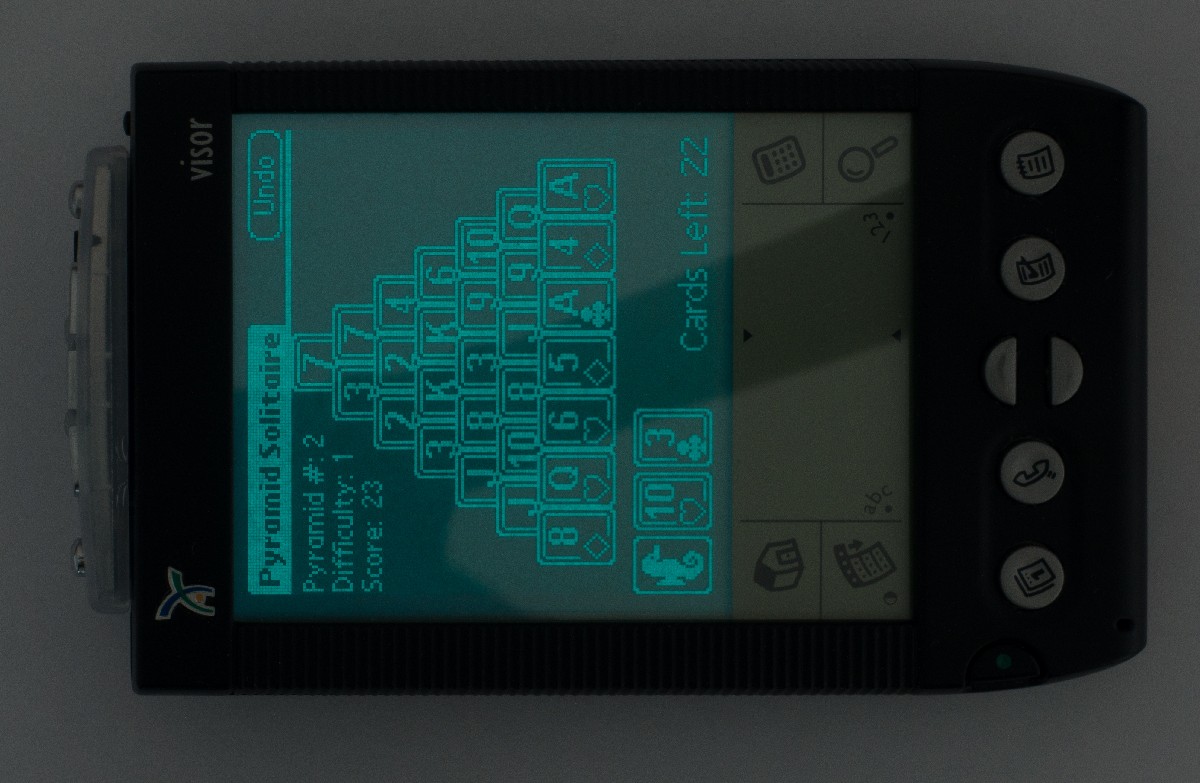
And in 2007 there was a “pan or lost” situation. It’s impossible to compete with Apple by selling a device with 10% of features for 80% of the cost. It is impossible to attract third-party software developers with an ancient and inconvenient platform. You can not try to embrace the immense, create a second Android, if you, as a company, have not been doing this all your life. The twenties of the twenty-first century can become an era of niche devices with which sluggish market giants cannot compete. But Palm, this brilliant prospect will not help - the company is chewed by the jaws of mergers and acquisitions, rolled up with patent and legal conflicts, and no longer exists. It is a pity, but such is life. It’s good that 18 years ago people responsible for the creation of this company made such devices that are still working, and it seems that they will work for another twenty years.
Source: https://habr.com/ru/post/417595/
All Articles